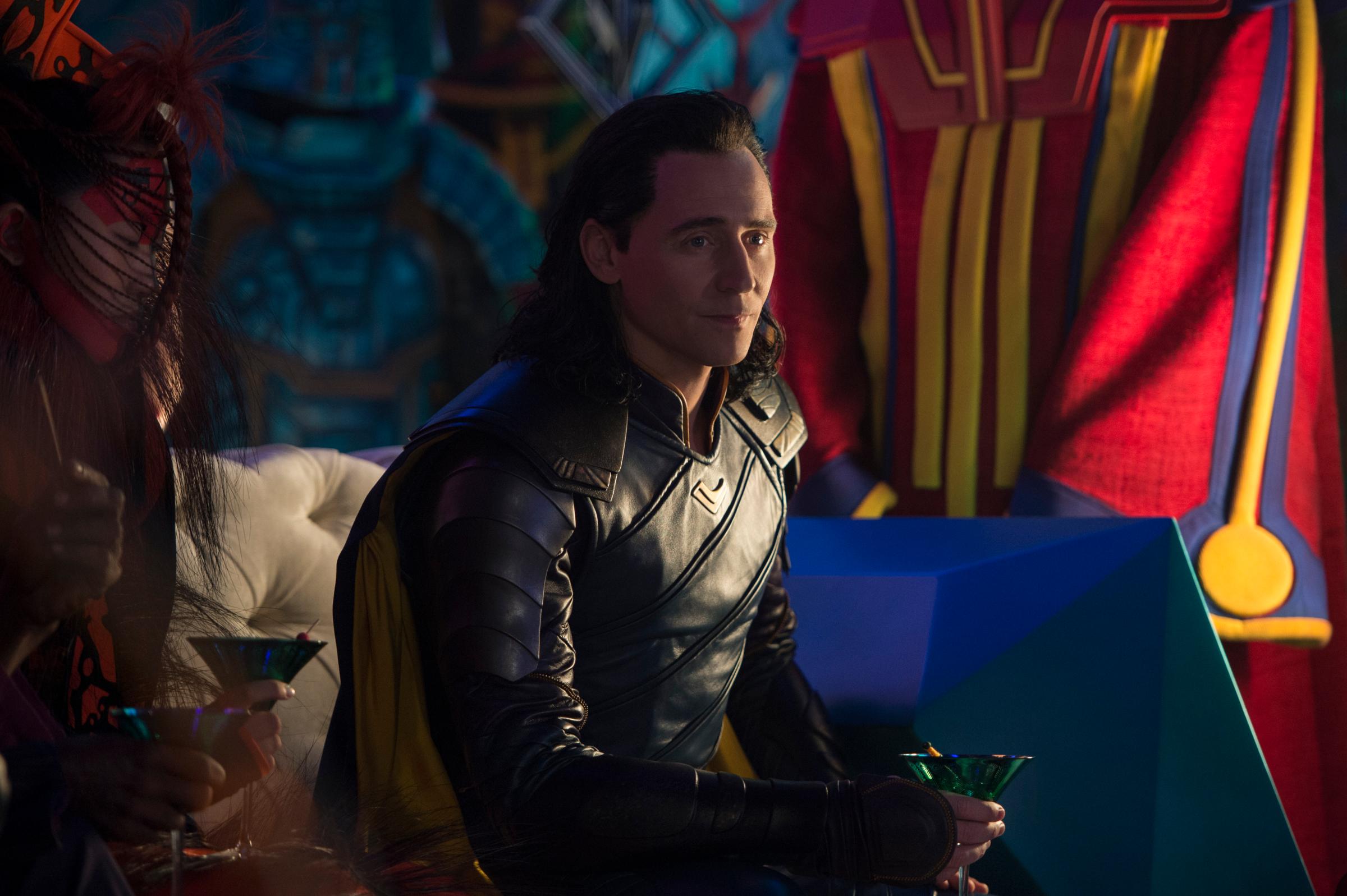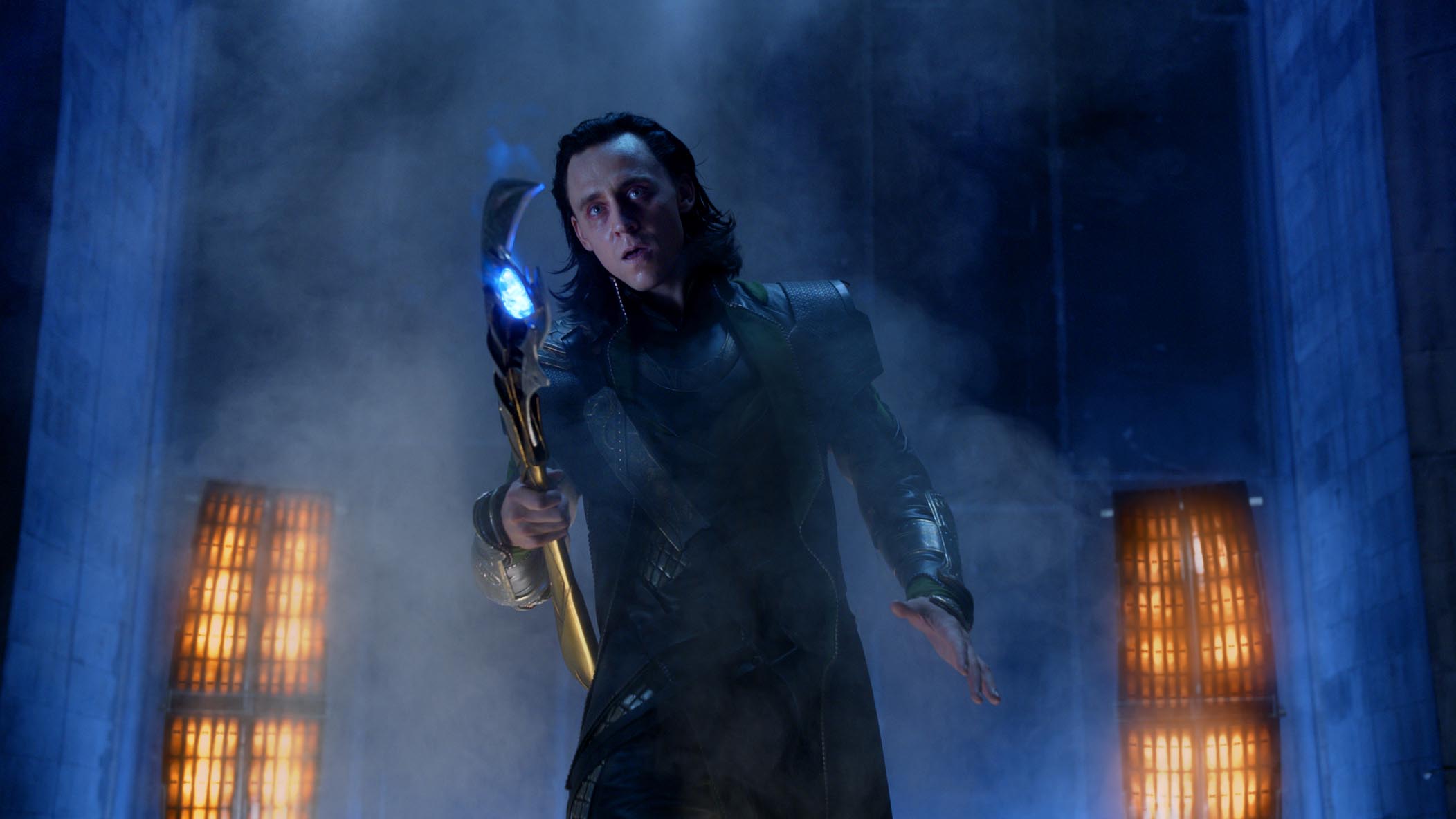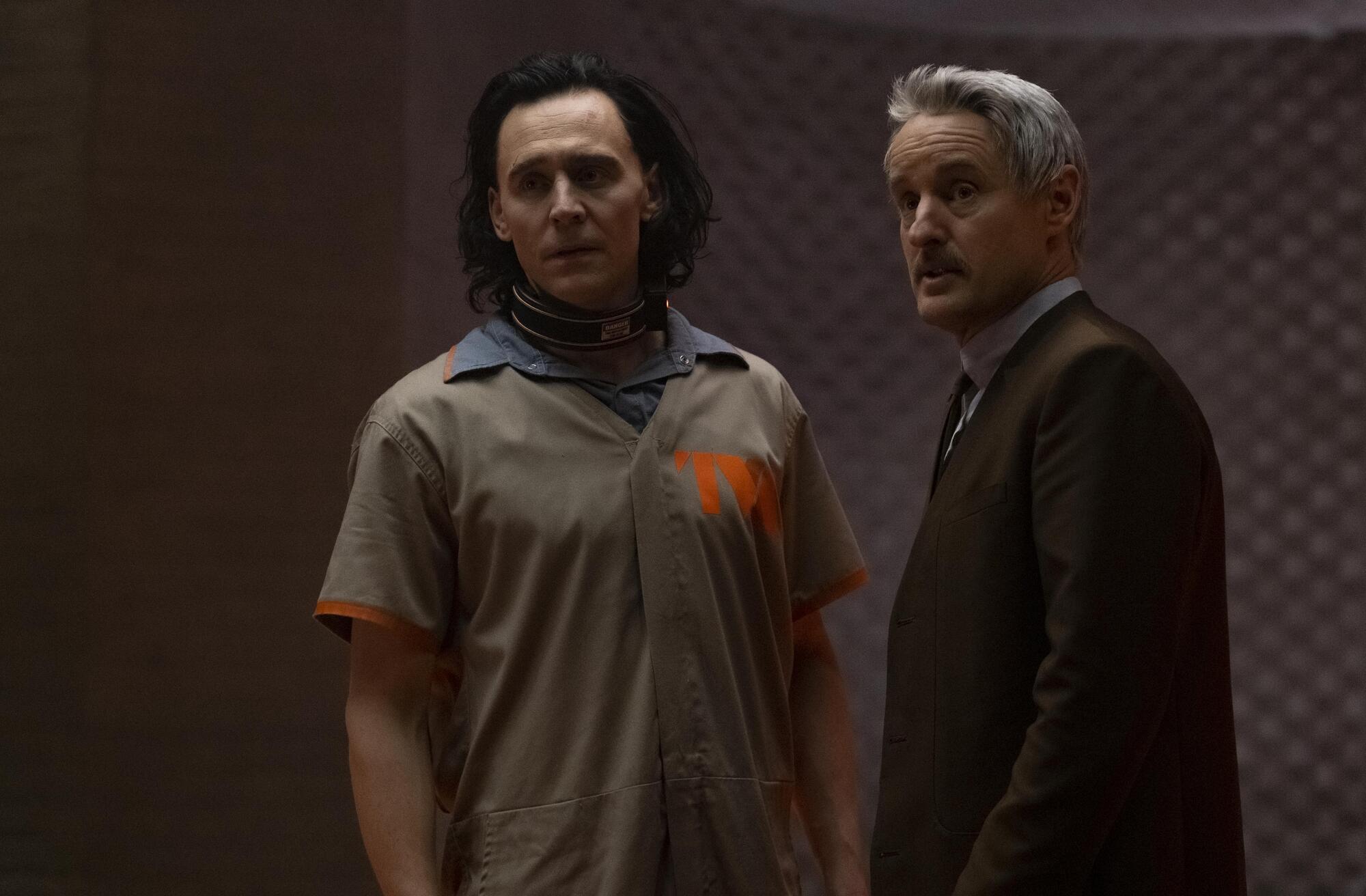Loki has already had a full arc in the Marvel Cinematic Universe (MCU). The fan-favorite character, played by Tom Hiddleston, began as a villain in Thor and the first Avengers movie in 2011 and 2012 and morphed into something of an anti-hero, or at least a lovable cad, by the time Thor: Ragnarok and Avengers: Infinity War were released in 2017 and 2018. Now, Marvel is turning back the clock and undoing Loki’s maturation. The new Disney+ series Loki, debuting June 9, will be a soft reboot for the character.
The trailers for the show reveal little except that a 2012 version of the Marvel antihero is recruited by a group of time cops to restore order to the universe. But this “Loki variant,” as he is called, has not learned to love his brother Thor (Chris Hemsworth) or the importance of being a hero. He’ll likely have to learn those lessons all over again as he hops through time and—as some fans predict—meets different versions of himself in different universes.
If Loki’s time-traveling antics already have you confused, here’s everything you need to know about what happened to Loki before the show, how time travel works in the MCU and how Loki will tie into future Marvel movies.
Read More: All the Marvel Shows Set to Premiere on Disney+
What’s Loki’s backstory?

Loki is a trickster who switches allegiances from movie to movie. Like his brother Thor, he is a god, though he finds out in the Thor movies that he is not the genetic son of Oden, the King of Asgard, as Thor is. He is descended from the Frost Giants and was adopted by Oden.
Thor and Loki have a rather complicated relationship. Loki has tried to usurp Thor and Oden’s power several times and take the throne of Asgard for himself. He even allied himself with Thanos in Avengers and used two of the Infinity Stones to try to enslave all of Earth before the Avengers defeated him.
But Loki has also sacrificed himself several times for his brother. In fact, he “dies” twice in the Thor movies, though it turns out he faked both deaths (through magic, I guess) and always returns to the delight of his fans. By the end of the third Thor movie, Thor: Ragnarok, Loki seems to have changed his ways. He helps Thor save the people of Asgard from their evil sister Hela and plans to help Thor start a new colony for their people.
Unfortunately, just as the Asgardians are making their escape from their burning planet, they are intercepted by Thanos, on the hunt for Infinity Stones. Loki, despite having become an avowed good guy, couldn’t help but steal one of the Infinity Stones from the treasure room at Asgard before they abandoned the planet, thus attracting Thanos to the ship of refugees.
Loki feigns loyalty to Thanos but secretly plots to kill him. But Thanos catches Loki and chokes him to death in front of Thor, quipping, “No resurrections this time” as he kills him.
Wait, so Loki is dead?

Yes, “Loki Prime,” as we’ll refer to him—the Loki who made amends with his brother Thor and helped save the people of Asgard and tried to kill Thanos to save the universe—is dead. But when the Avengers travel back in time in Avengers: Endgame, they encounter another version of Loki, the 2012 version of Loki obsessed with ruling earth. That version of Loki is the one we’ll see in his eponymous TV series.
It’s also worth noting that these are superhero films. Nobody is ever dead dead if Marvel wants to bring them back. Gamora died in Infinity War but a time-traveling version of her returned for Endgame. We were told that Hank Pym’s wife, Janet, was dead, but it turned out she was only lost in the Quantum Realm. Idris Elba’s Heimdall was killed by Thanos in Infinity War but has been spotted on the set of the next Thor movie, Thor: Love and Thunder.
Did you really think that Marvel was going to dump its most beloved villain?
O.K., so when did we last see Loki?

In order to defeat Thanos in Endgame, the Avengers decide they must travel back in time and retrieve the Infinity Stones. One group of Avengers travels to New York in 2012 when Loki was attempting to use both the Mind Stone and the Space Stone (a.k.a. the Tesseract) to attack the city and enslave all Earthlings. The Avengers are able to retrieve both stones from the 2012 version of Loki but during a surprise scuffle, the 2012 version of Loki is able to grab the Tesseract and disappear.
The TV show Loki begins with that version of Loki being apprehended by the Time Variance Authority (TVA), an organization tasked with preventing disruptions in the time-space continuum. They tell Loki that he “broke reality” when he grabbed the Tesseract and must help them restore the balance of the universe.
This version of Loki isn’t as mature or evolved as the version that was killed, and that will no doubt play a major role in how the character decides to conduct himself on the show.
Read more: Here’s What’s Next in the Marvel Cinematic Universe After WandaVision
How does time travel work in the MCU?

Let’s start by explaining how time travel does not work in the Marvel movies. (I promise, it’s simplest that way.)
Movies tend to feature two types of time travel. I’ll call them the butterfly effect and the loop. Back to the Future employs the butterfly effect. Everything that Marty McFly does in the past affects his future. So when he accidentally prevents his parents from falling in love, he jeopardizes his own existence in the future.
Harry Potter and the Prisoner of Azkaban employs the loop. Harry and Hermione necessarily have to travel back in time to save Sirius Black because they always had traveled back in time to save Sirius Black. There was always only one version of the story and the outcome was going to be the same. Think about when Harry travels back in time and produces the patronus. He knows that he has to produce it because somebody (he) had already produced it.
Marvel’s time travel doesn’t work like either the butterfly effect or the loop. When the Avengers travel back in time in Avengers: Endgame to retrieve the Infinity Stones and defeat Thanos, they create branching timelines. So nothing they do in the past affects their present. It only impacts a different timeline.
In Endgame, the Ancient One explains to Hulk that someone will need to travel back in time and put all the Infinity Stones they stole back in their places to ensure that time remains stable. Captain America does this for all the Infinity Stones. But there’s one problem: When the Avengers traveled back to the Battle of New York in 2012, Loki was able to escape with one of the Infinity Stones, the Tesseract. Captain America and Iron Man traveled further back in time to retrieve that same stone in the 1970s. But Loki still created a new branching timeline when he grabbed the 2012 Tesseract and draws the attention of the TVA.
So in theory when a character creates a branching timeline, the “variant” of that character can go off and do their own thing until the TVA captures them. That means multiple versions of a character can exist in different branching timelines and even meet and interact with one another.
Who else is in Loki?

Owen Wilson and Gugu Mbatha-Raw seem to play members of the TVA. Richard E. Grant is also in the show, though his character has not been revealed.
Some fans have speculated based on the comics that Loki will interact with other versions of himself in various timelines, and Grant could be an older version of Loki. There’s also rumored to be a younger Loki and female Loki.
How will Loki tie into the MCU?

Loki’s showrunner Michael Waldron has also been tapped to write Doctor Strange in the Multiverse of Madness, suggesting that there may be some tonal similarities and even plot connections between the two projects. (Waldron wrote on Community, which the Russo brothers also worked on, as well as Rick and Morty, so expect Loki to be rather irreverent.)
We know that the next Doctor Strange movie will star the sorcerer Doctor Strange and Wanda Maximoff, who discovered that she is a witch at the end of WandaVision. We also know that, like Spider-Man: No Way Home, the next Doctor Strange film will involve some multiverse shenanigans. Considering that Loki will involve lots of time travel, it’s probable that we’ll get a glimpse of the multiverse in this show.
Marvel has teased that another movie will deal with the multiverse, this year’s Spider-Man: No Way Home. As Spidey fans know, three different actors have played Peter Parker in three different live-action Spider-Man franchises: Tobey Maguire, Andrew Garfield and, now, Tom Holland.
Marvel Studios has revealed that villains from past versions of the Spider-Man movies, like Alfred Molina’s Doctor Octopus from the Tobey Maguire movies and Jamie Foxx’s Electro from the Andrew Garfield movies, have been cast in the upcoming Tom Holland starrer, No Way Home. Some fans have even speculated that Maguire and Garfield will show up in the movie as the various Spider-Men are transported across parallel universes. If Loki introduces the concept of one Loki variant interacting with another, the idea of one Peter Parker meeting another Peter Parker played by a different actor isn’t so farfetched.
It remains unclear whether this version (or any version!) of Loki will appear in Thor: Love and Thunder, which is due to be released in 2022. We do know that Matt Damon, who played Loki in a staged version of the Thor saga within Thor: Ragnarok, will appear in Love and Thunder, suggesting that we’ll at least get allusions to the trickster in the forthcoming Thor film.
More Must-Reads from TIME
- Cybersecurity Experts Are Sounding the Alarm on DOGE
- Meet the 2025 Women of the Year
- The Harsh Truth About Disability Inclusion
- Why Do More Young Adults Have Cancer?
- Colman Domingo Leads With Radical Love
- How to Get Better at Doing Things Alone
- Michelle Zauner Stares Down the Darkness
Write to Eliana Dockterman at eliana.dockterman@time.com